PMC Speakers twotwo sub2 User manual
- Category
- Soundbar speakers
- Type
- User manual

Hand built by
TM
Advanced Transmission Line
Model
Serial No.
User Guide


IMPORTANT
!
Warranty Certicate
Please take a few moments to complete the warranty card at the back of this
booklet (or register at www.pmc-speakers.com) as this not only records the
purchase of your loudspeakers, but also provides you with an opportunity to make
suggestions and provide feedback directly to PMC.
Product Support
For product support, accessories or servicing advice, please contact
a PMC authorised dealer/distributor. See www.pmc-speakers.com and click on
‘Where to buy’.
Company Details
THE PROFESSIONAL MONITOR COMPANY LIMITED
HOLME COURT, BIGGLESWADE, SG18 9ST
T 0870 4441044 F 0870 4441045
email: [email protected] web: www.pmc-speakers.com
© 2015 PMC. All rights reserved.
PMC stock code: 14767. Ref. no - 613
This document should not be construed as a commitment on the part of PMC. The information it contains is
subject to change without notice. PMC assumes no responsibility for any errors within this document.
CE Conformity: PMC active loudspeakers conform to EC Directive LVD2006/95/EC and EMC 2004/108/EC.
WEEE European directive: PMC is a member of a National Compliance scheme and has gained the
associated certication of compliance from the Environment Agency with the registration WEEE/GJ0101WU.
WEEE EU Directive
This symbol on the product, and in or on its packaging, indicates that this product must not be disposed
of with other household waste. It is the responsibility of the owner to dispose of waste equipment via a
designated collection point for the recycling of waste electrical and electronic equipment. The recycling
of waste equipment is an attempt to conserve natural resources and ensures that it is recycled in a manner
that protects human health and the environment. For more information about where to dispose of waste
equipment for recycling, please contact your local waste/recycling authority or the dealer from whom you
purchased the product.

A message from Peter Thomas:
Peter Thomas
Owner & Chief Designer
“
Our sole aim while designing loudspeakers is to recreate the true essence of an artist’s
intention, combining the ultimate level of sonic resolution with solid engineering principles.
We believe that the same loudspeaker can be used throughout the entire audio chain,
from composer to studio or lm stage, post-production or mastering and then, nally,
the consumer. We also think that a well designed loudspeaker should be able to excel
regardless of the audio genre, and reproduce spoken word, rock, pop, or classical music
with the same precision and accuracy. Our unswerving passion for getting it right has made
this goal possible.
Thank you for choosing PMC products. Please read this user guide and install your new
twotwo subwoofer bearing in mind the advice given within.

Over more than two decades PMC has
earned an unrivalled reputation for creating
the world’s nest professional loudspeakers.
Simply put, our loudspeakers provide a
reference for the world’s highest prole
productions and events. They are found at
every stage of the creative process, from
conception to recording and broadcast
and, of course, in the home.
Our client list reads like a who’s who of the
sonically aware, with Prince, Elbow,
Stevie Wonder, Coldplay, Brian May,
Universal, EMI, Sony, Pinewood Studios,
Dreamworks, Capitol Studios and the BBC
among the makers of movies and music
who use our products.
Our loudspeakers were also used in the
production of Titanic, Spiderman III, Iron
Man 2, Finding Nemo, Pirates of the
Caribbean III, and during broadcasts of the
London Olympics, 2012.
EMI
Stevie Wonder
BBC
Tony Bennett
Prince
Coldplay
UNIVERSAL MUSIC GROUP
elbow
Thomas Newman
Royal College of Music
Brian May
Warner Music
Kraftwerk
Pinewood Studios
Capitol STUDIOS
Google
ESPN
Sony
JVC Studios
PMC: the authority for quality sound.
Congratulations - You have joined the elite

Contents
General Usage Guidelines
Introduction
Unpacking and Care
PMC’s
TM
Advanced Transmission Line
– How the Advanced Transmission Line Works
System Description
User EQ Options
Connections
Running In
Applications – 2.1 Congurations
Applications – 5.1 Congurations
Applications – 7.1 Congurations
Positioning & Alignment
twotwo sub1 Specications
twotwo sub2 Specications
Operational Controls
Service
The PMC Range
Our Meticulous Care and Attention
Inspection Certicate
Warranty On-Line
Warranty Certicate – Part 1 – Your copy
Warranty Certicate – Part 2 – PMC’s copy
Help us improve – Your Comments
User Guide

Read these instructions and keep them in a safe place for future reference.
Heed all electrical safety warnings, including any on the loudspeaker itself.
Do not use the loudspeaker near water.
Do not install the loudspeaker near heat sources such as radiators, ovens or other very hot
equipment, or in unventilated softs or enclosures.
Do not attempt to service the equipment. There are no user-serviceable parts inside.
Please refer all servicing to PMC authorised personnel.
Servicing is required when the apparatus is damaged, exposed to moisture, or exhibits
a distinct or sudden change of operation or audio performance.
Unplug this product from both signal source and power during electrical storms, or when
unused for extended periods of time.
Packaging material can pose danger to the young and vulnerable. Ensure these items
are stored or disposed of safely.
The twotwo active subwoofers can produce high sound pressure levels. Exposure to high
levels of sound has the potential to cause hearing damage. Use care when adjusting the
system volume to ensure sound pressure levels remain within safe and comfortable limits.
Very powerful magnets are employed in the twotwo active subwoofers which may have
a detrimental effect on magnetically-sensitive items if placed too close, such as CRT
(tube-style) televisions or monitors, and media such as cassettes and videotapes.
The loudspeaker cabinet should only be cleaned with a dry, lint-free, cloth. Do not use
solvents, abrasives, waxes or liquids as they may be detrimental to the nish.
To avoid damage to ooring the user should determine the suitability of either spikes or
protective glides.
PMC has made efforts to provide accurate installation information and good quality
xings. However, PMC will not be held responsible or liable for injuries or property damage
(direct, indirect or consequential) arising out of use or inability to use this product safely
and properly.
This product may contain nuts.
General Usage Guidelines

Thank you for choosing the PMC twotwo active subwoofer. This guide provides installation and
operating instructions.
These active subwoofers can be used in a 2.1 conguration with twotwo series monitors to gain
extra bass extension and headroom, or they can be used to reproduce a low frequency effects
(LFE) channel in a surround system. Numerous congurations are possible, some of which are
illustrated in this guide.
The electronics built into the subwoofer cabinets are identical for both sub models, and include an
ultra-low distortion Class-D power amplier, with DSP-based gain, ltering, and bass management
functions. Balanced stereo analogue and AES3 digital inputs are accepted to feed the
subwoofer system, and these input signals are also passed through to the analogue and digital
outputs for connection with other devices. The outputs can be unprocessed or high-pass ltered,
and with xed or variable gain.
The input source, analogue input sensitivity, gain trim, and overall volume are all adjustable, as are
the subwoofer’s low-pass lter slope and frequency. Additionally, the phase can be adjusted and
a single parametric equaliser is provided to assist with in-room alignment. The analogue and digital
outputs can be high-pass ltered, if required, to feed satellite speakers in a 2.1 conguration.
This subwoofer builds upon PMC’s world-class design pedigree, combining the nest drivers
available with the unique TM
Advanced Transmission Line
(Advanced Transmission Line) bass loading principle, sophisticated
Class-D amplication, and ultra-precise DSP control. PMC’s unique TM
Advanced Transmission Line
technology uses
contemporary materials to provide optimised absorption of unwanted low-midrange energy
within the cabinet, while extending bass output signicantly with negligible harmonic distortion.
The two long-throw bass drivers employed in the twotwo sub1 subwoofer are a bespoke PMC
design using natural materials, with an ultra-light and ultra-stiff doped-paper cone to deliver
unparalleled transient response. The twotwo sub1 cabinet has a small footprint, making it more
convenient and easier to place than typical cube-shaped designs. The twotwo sub2 uses a
proprietary PMC at diaphragm piston driver in a larger, more conventionally-sized cabinet.
Introduction

The PMC twotwo active subwoofers are packed in heavy-duty protective cartons. Please retain the
carton to ensure that the loudspeaker can be transported safely if the need arises in the future. If you
dispose of the packaging please do so in an environmentally responsible and safe way.
What’s in the Box?
* The supplied self-adhesive D-cup isolators can be used to cover the M8 holes if the glide feet/spikes
are not required.
The twotwo subwoofer products are heavy. Please take care when lifting from the carton.
Do not attempt to use the loudspeaker if the packaging has been water-damaged.
Care and Service
In normal usage PMC speakers should provide many years of trouble-free operation, but in the unlikely
event that you suspect damage or failure has occurred do not attempt to repair the unit yourself.
There are no user-serviceable parts inside. Contact your dealer for advice and a service return
address.
Clean the cabinets with a dry and lint-free cloth, and avoid the use of solvents as they may damage
the nish of the unit.
Unpacking and Care
!
1x twotwo sub1 or sub2 active subwoofer
1x AC mains power cable
1x RJ45 control link cable
1x User Guide
4 x M8 glide feet
4 x D-cup isolators*
Please Note: This unit must be earthed
!

A further advantage of the ATL design
approach is greater bass extension and
higher SPL capability compared to typical
ported or sealed designs of a similar size –
even if similar drivers were used.
Moreover, the very consistent bass driver
loading brings the welcome benet that
the frequency response remains consistent
regardless of listening level, and analytical
auditioning can be conducted without
needing high replay volumes just to achieve
an optimal bass response. This is a unique
and very valuable characteristic of PMC’s
Advanced Transmission Line.
PMC’s unique TM
Advanced Transmission Line
(Advanced Transmission
Line) enclosures have taken loudspeaker
design to the highest level, using sophisticated
cabinet construction, proprietary drive units,
and patented absorption materials and
techniques. The benets are enormous
compared to the relatively simple sealed and
ported designs currently available elsewhere.
PMC’s innovative approach places the bass
drivers near one end of a long cavity (the
Advanced Transmission Line). This cavity
is heavily damped with acoustic material
specied carefully to absorb the upper bass
and higher frequencies radiating from the rear
of the bass driver. The lowest frequencies are
allowed to pass down the line and emerge
from the large rear vent which acts essentially
as an extra bass driver.
An important benet of the TM
Advanced Transmission Line
approach is
that the air pressure inside the cabinet, which
loads the bass driver, remains consistent.
This helps to maintain control of the driver
over a wide frequency range and signicantly
reduces LF distortion. Consequently,
the upper bass detail is not masked by
harmonic distortion and the result is PMC’s
characteristically fast, attacking bass, and
outstanding clarity.
Advanced Transmission Line
How it works
TM
Advanced Transmission Line
‘No other bass loading technology provides such resolution and tonal accuracy at all volume levels’

System Description
All twotwo active subwoofers share the same
powerful DSP engine, operating at a xed
sample rate of 96kHz.
The two balanced analogue inputs are
conditioned by an adjustable low-noise gain
stage prior to A-D conversion to optimise the
signal-to-noise ratio. The converter is a very
high quality delta-sigma device, producing
a 24-bit, 96kHz output. The left and right
channels are summed to drive the subwoofer
speakers, but passed on as separate signals
to the analogue outputs.
The AES3 digital input accepts sample rates
up to 192kHz, and is sample rate converted
to 96kHz automatically. Either channel, or a
sum of both, can be selected to drive the
subwoofer, and both are passed on to the
digital output.
The DSP engine provides the system volume
control, low-pass ltering, parametric
equalisation, and phase alignment for the
subwoofer, as well as high-pass ltering bass
management options for the analogue and
digital outputs. It also provides non-invasive
excursion limiting to protect the drivers.
The DSP system generates three sets of outputs.
In addition to the digital output, there are
two separate D-A converters. One converter
provides the analogue outputs, while the
other feeds a 400W Class-D power amplier
connected to the loudspeaker(s).
The analogue and digital outputs are always
available and can be formatted to provide
either full range or high-pass ltered signals,
which can be used for satellite speakers or other
destinations. The output level can be xed, or
follow the system volume control setting.
An optional remote control is available to
control the settings and volume of an entire
twotwo system.
XLRs Adjust level
for optimal
conversion
24-bit
converison
at 96kHz
AES3 XLR or RJ45
32-192kHz
Sample rate
conversion
to 96kHz
Volume,
roll-off, PEQ,
phase and
protection
Conversion
to analogue
Power amp
Analogue
Inputs
Gain
Stage A/D DSP
DAC AMP
SRC
Digital
Input
DAC XLRs
Analogue
Outputs
AES3 XLR
and RJ45
Digital
Output
Subwoofer

PMC’s twotwo active subwoofers feature DSP-based user-equalisation options. These comprise an
adjustable low-pass lter to determine the frequency range over which the subwoofer operates,
with an adjustable slope which allows perfect integration with the low-frequency response of the
stereo satellite speakers. A single-band parametric equaliser can be used to compensate for single
resonances or dips in the room response, assisting with in-room alignment.
The low-pass lter can be switched off,
or congured with a slope of 6, 12, or
18dB per octave, and with turnover
frequencies of 50, 80,120,150, or 200Hz,
as illustrated in this diagram.
As a starting point when using any twotwo active subwoofer with any model of twotwo satellite
monitor, a low-pass lter setting of 80Hz should give the best integration. However, you may adjust
this setting as room conditions and personal preferences dictate.
The centre frequency of the single-band parametric equaliser (PEQ) is adjustable between 20Hz and
150Hz (in 5Hz increments). The bandwidth is variable between Q=1 to 8 in 0.5 steps (equaivalent to
bandwidths of 1.4 to 0.2 octaves). The PEQ gain can be adjusted between a boost of up to +7.87
and a cut of up to -8dB.
A separate high-pass lter option is included for bass-managment of the output signals which may
be passed on to satellite loudspeakers. The high-pass lter turnover frequency and slope mirrors the
selected low-pass lter settings.
User EQ Options
200Hz150Hz120Hz80Hz50Hz
Off
6dB/Oct
12dB/Oct
18dB/Oct
+8dB
0dB
-8dB
PEQ Gain
20Hz 150Hz
Q=8
Q=1
PEQ Frequency

Connections
!
Caution
To avoid potential damage, please ensure that the signal source is turned off before
connecting or disconnecting your twotwo active subwoofer.
Connections
The rear panels of all twotwo active subwoofers carry the same connectors for audio,
control and mains power as described below.
Audio
The two electronically-balanced analogue inputs and the AES3
digital input accept 3-pin male XLR connectors, wired with Pin-1
screen (ground), Pin-2 signal positive (hot), and Pin-3 signal
negative (cold). The appropriate input is selected via the rear
panel menu system. Each input has a corresponding output
which
can provide either the full range input signal or a high-pass ltered
version, selected via the menu system.
Power
An IEC (C14) mains socket is provided with adjacent power switch.
There is no AC voltage selector; twotwo active subwoofers accept
AC mains voltages between 90-132 and 180-264V.
THIS UNIT MUST BE EARTHED
In – Thru Connections
The ‘IN’ RJ45 socket accepts volume data and digital audio from the previous twotwo
speaker in the control chain. The rst unit in the chain acts as the Master Volume
controller. An optional Remote Control unit can also be connected to the IN socket.
The ‘THRU’ socket sends the control signal to the next speaker in the chain, and also
passes the digital audio signal if the rst speaker has a valid digital input from either its
AES3 or RJ45 ‘IN’ connectors. Note: if the AES3 XLR and RJ45 ‘IN’ are both receiving
valid digital audio, the XLR input automatically takes priority.
!
b
a
c
k
www.pmc-speakers.com
off
on
100-240V~
50-60Hz 80W
NO USER SERVICEABLE PARTS INSIDE
SERVICING BY AUTHORIZED PERSONNEL ONLY
CAUTION - RISK OF ELECTRIC SHOCK - DO NOT OPEN
PRECAUTION - RISQUE DE CHOC ELECTRIQUE - NAS PAS OUVRIR
WARNING - THIS ITEM IS CAPABLE OF PRODUCING HIGH SOUND PRESSURE
LEVELS WHICH COULD CAUSE PERMANENT HEARING DAMAGE
DO NOT USE WITHOUT AN EARTHED MAINS CONNECTION
DO NOT EXPOSE TO MOISTURE OR WATER
designed, made & tested in the UK
d
i
g
i
t
a
l
i
n
a
e
s
3
in thru
a
n
a
l
o
g
u
e
i
n
r
i
g
h
t
a
n
a
l
o
g
u
e
i
n
l
e
f
t
d
i
g
i
t
a
l
o
u
t
a
e
s
3
a
n
a
l
o
g
u
e
o
u
t
r
i
g
h
t
a
n
a
l
o
g
u
e
o
u
t
l
e
f
t
TM
Advanced Transmission Line

Running-In
When brand new, PMC monitors will take a short period of use before they reach
their full potential.
This is because the mechanical and acoustical characteristics of the bass driver alter
slightly after manufacture as the exible surround elements relax and reach their
optimum compliancy. Once run-in, the compliance remains stable and consistent
and the
TM
cabinet parameters are critically designed to load the bass driver
accurately only when it has reached this long-term, optimal compliancy.
Consequently, during the initial running-in period of about 50 hours, the performance
of the twotwo active subwoofers will change and improve. You will notice the bass
tonality becoming fuller, more accurate and neutral, and the bass extension will
increase signicantly.
50+ hours to run-in
1122
111
1100
99
88
77 66 55
44
33
22
11
1

Applications – 2.1 Congurations
All twotwo active subwoofers can be used to extend the bass response of any twotwo series monitor, or to
reproduce the LFE channel in a surround system. The diagrams on the following pages illustrate a variety of
conguration suggestions. The congurations and settings described here apply equally to all twotwo active
subwoofer models.
There are three important points to note. First, the twotwo loudspeaker (or optional remote controller) at
the start of the control chain acts as the system master controller and sets the volume for the entire system.
Secondly, the nal loudspeaker in the chain must have the loop-back terminator plugged into the RJ45
Remote Thru socket. Finally, if an AES3 digital input signal is connected to any loudspeaker in the chain the
audio data is passed automatically over the RJ45 control line to the next monitor in the chain, and will be
used if the AES3 input is selected but not connected on that loudspeaker.
The diagram below illustrates one example of conguring the analogue audio and control connections in
a stereo conguration using a twotwo sub1 active subwoofer to extend the bass performance of twotwo
active monitors. In this arrangement the left and right analogue inputs are connected to the subwoofer,
and the digital output from the subwoofer (suitably high-pass lterered, if desired) is passed on to the
satellite twotwo monitors via RJ45 cable.
The optional remote controller is shown here as the rst item in the control chain, with the loop-back
terminator plugged into the RJ45 Thru port on the last device in the control chain (in this case, the front left
twotwo loudspeaker).
Front
Left
Front
Right
Bass
Extension
menu
back
presets
mute
pushtoselect
Optional
Remote
Controller
AES3 via RJ45
(AES In Left)
AES In
(Right)
AES3 via RJ45
1
2
3
2.1 Configuration, Analogue Source, Digital Link
Term
Analogue Audio Connections
RJ45 Data Control Connections
Controller Channel
1
Left In
Right In Analogue In
Analogue Audio Input Source
Centre

The diagram above illustrates an alternative 2.1 conguration using analogue connections between the
subwoofer and loudspeakers, this time with the optional remote controller connected to the front left
loudspeaker and the terminator on the subwoofer.
The example below shows a 2.1 setup with a stereo AES3 digital input connected to the subwoofer. By
selecting the AES (L+R) mode a mono sum of both channels is used to drive the subwoofer speakers. The
left and right audio signals are passed on via an AES3 connection to the digital input of the right satellite
monitor where right AES3 channel is selected as the input source. The digital audio signal is automatically
passed on to the other monitor via the RJ45 cable carrying the control data where the left AES3 channel is
selected and the terminator connected to its RJ45 Thru port.
Applications – 2.1 Congurations
Front
Left
Front
Right
Bass
Extension
menu
back
presets
mute
pushtoselect
Optional
Remote
Controller
AES3 L/R
AES3 via RJ45
(AES In Left)
AES3 In
(Right)
AES3 Out
AES3 In
(L+R)
1
2
3
2.1 Configuration, Digital Sources
Term
Digital
External Digital Audio Connections
RJ45 Data Control Connections
Audio Input Source
Controller Channel
1
AES3 L/R
3
Front
Left
Front
Right
menu
back
presets
mute
pushtoselect
Optional
Remote
Controller
12
2.1 Configuration, Analogue Sources
Left In
Right In Analogue In
Analogue In
Bass
Extension
Term
Analogue In
Left Analogue OutRight Analogue Out
Analogue
External Analogue Audio Connections
RJ45 Data Control Connections
Audio Input Source
Controller Channel
1
Centre

Applications – 5.1 Congurations
3
Centre
Front
Left
Front
Right
Right
Surround
Left
Surround
LFE
menu
back
presets
mute
pushtoselect
Optional
Remote
Controller
Analogue In
(Left)
1
2
4
5
6
5.1 Configuration, Analogue Sources
Left Front
Centre
Right Front
LFE
Left Surround Right Surround
Analogue In
Analogue In
Analogue In
Analogue In
Analogue In
Term
Analogue
External Analogue Audio Connections
RJ45 Data Control Connections
Audio Input Source
Controller Channel
1
Centre
Centre
Front
Left
Front
Right
Right
Surround
Left
Surround
LFE
menu
back
presets
mute
pushtoselect
Optional
Remote
Controller
AES3 L/R
AES3 C/LFE AES3 Ls/Rs
AES3 via RJ45
(AES In Left)
AES3 via RJ45
(AES In Right)
AES3 In
(Left)
AES3 Out
AES3 In
(Left)
AES3 In
(Right)
AES3 In
(Right)
12
4
5
3
6
5.1 Configuration, Digital Sources
Term
Digital
External Digital Audio Connections
RJ45 Data Control Connections
Audio Input Source
Controller Channel
1
AES3 L/R
These two diagrams, above and below, illustrate two possible methods of connecting a 5.1 system with
analogue (above) or digital (below) sources. Note the loop-back terminator connected to the nal unit in
the control chain. In the digital arrangement, note the use of the data control connections to pass audio
between consecutive pairs of monitors in the digital conguration.

Applications – 7.1 Congurations
3
Centre
Front
Left
Front
Right
Right
Back
Left
Back
Right
Surround
Left
Surround
LFE
menu
back
presets
mute
pushtoselect
Optional
Remote
Controller
Analogue In
(Left)
1
2
4
5
6
7
8
Analogue
External Analogue Audio Connections
RJ45 Data Control Connections
Audio Input Source
Controller Channel
1
7.1 Configuration, Analogue Sources
Left Front
Centre
Right Front
LFE
Left Surround
Left Back
Right Back
Right Surround
Analogue In
Analogue In
Analogue In
Analogue In
Analogue In
Analogue In
Analogue In
Centre
Term
Centre
Front
Left
Front
Right
Right
Back
Left
Back
Right
Surround
Left
Surround
LFE
menu
back
presets
mute
pushtoselect
Optional
Remote
Controller
AES3 L/R
AES3 C/LFE
AES3 Ls/Rs
AES3 Lb/Rb
AES3 via RJ45
(AES In Left)
AES3 via RJ45
(AES In Right)
AES3 via RJ45
(AES In Right)
AES3 In
(Left)
AES3 Out
AES3 In
(Left)
AES3 In
(Left)
AES3 In
(Right)
AES3 In
(Right)
12
4
5
3
67
8
7.1 Configuration, Digital Sources
Term
Digital
External Digital Audio Connections
RJ45 Data Control Connections
Audio Input Source
Controller Channel
1
AES3 L/R

Applications – 5.1 further Congurations
LFE
Centre
Front
Left
Front
Right
Right
Surround
Left
Surround
Bass
Extension
menu
back
presets
mute
pushtoselect
Optional
Remote
Controller
1
2
4
5
3
6
5.1 Configuration, Analogue Sources With Bass Extension
7
Left In
Right In Analogue In
Term
Analogue In
Analogue In
Left Analogue Out Right Analogue Out
Analogue In
(Left)
Centre
LFE
Left Surround Right Surround
Analogue In
Analogue In
Analogue In
Analogue
External Analogue Audio Connections
RJ45 Data Control Connections
Audio Input Source
Controller Channel
1
Centre
The examples below, and on the next page, illustrate possible conguration arrangements involving two
subwoofers – one employed to handle the LFE signal from a 5.1 surround source, and a second used to
extend the bass performance of the front stereo pair of satellite monitors.
The same basic principles are employed as previously illustrated in the 2.1 and 5.1 congurations. In the
analogue connection example below, the front left and right signals are routed through a subwoofer used
to provide bass-extension, before being passed to the front satellite speakers. All of the other channels
are connected directly to their respective loudspeakers. The data control chain loops through each of the
satellite speakers and then on to the dedicated LFE and bass-extension sub-woofers, the last also having
the loop-back terminator attached.

LFE
Centre
Front
Left
Front
Right
Right
Surround
Left
Surround
Bass
Extension
menu
back
presets
mute
pushtoselect
Optional
Remote
Controller
AES3 L/R
AES3 C/LFE
AES3 Ls/Rs
AES3 via RJ45
(AES In Left)
AES3 via RJ45
(AES In Right)
AES3 In
(Left)
AES3 Out
AES3 In
(L+R)
AES3 In
(Right)
AES3 In
(Right)
12
4
5
3
6
Digital
External Digital Audio Connections
RJ45 Data Control Connections
Audio Input Source
Controller Channel
1
AES3 L/R
5.1 Configuration, Digital Sources With Bass Extension
Term
7
AES3 In
(Left)
AES3 Out
This is the same conguration as the previous page, with separate LFE and bass-extension sub-woofers, but
using digital input connections.
The front stereo digital audio signals are connected to the bass-extension sub-woofer, and then routed on
to the front left speaker via an AES3 cable. The right channel is conveyed to the right hand speaker via
the RJ45 contral cable. The centre/LFE channels are connected to the LFE sub-woofer, and an AES3 cable
used to pass the centre channel on to the centre speaker.
Left and right surround signals are connected to the right hand surround speaker, with the RJ45 control cable
passing the audio over to the left surround speaker. The control cable wiring is slightly more convoluted
than the analogue version in order to be able to use it to pass audio channels between consecutive speakers.
Alternative congurations are, of course, possible.
Applications – 5.1 further Congurations
Page is loading ...
Page is loading ...
Page is loading ...
Page is loading ...
Page is loading ...
Page is loading ...
Page is loading ...
Page is loading ...
Page is loading ...
Page is loading ...
Page is loading ...
Page is loading ...
Page is loading ...
Page is loading ...
Page is loading ...
Page is loading ...
Page is loading ...
Page is loading ...
Page is loading ...
Page is loading ...
-
 1
1
-
 2
2
-
 3
3
-
 4
4
-
 5
5
-
 6
6
-
 7
7
-
 8
8
-
 9
9
-
 10
10
-
 11
11
-
 12
12
-
 13
13
-
 14
14
-
 15
15
-
 16
16
-
 17
17
-
 18
18
-
 19
19
-
 20
20
-
 21
21
-
 22
22
-
 23
23
-
 24
24
-
 25
25
-
 26
26
-
 27
27
-
 28
28
-
 29
29
-
 30
30
-
 31
31
-
 32
32
-
 33
33
-
 34
34
-
 35
35
-
 36
36
-
 37
37
-
 38
38
-
 39
39
-
 40
40
PMC Speakers twotwo sub2 User manual
- Category
- Soundbar speakers
- Type
- User manual
Ask a question and I''ll find the answer in the document
Finding information in a document is now easier with AI
Related papers
-
 PMC Speakers twotwo.5 User manual
PMC Speakers twotwo.5 User manual
-
PMC teenty sub User manual
-
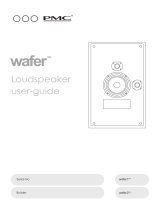 PMC Speakers TLE 1 User manual
PMC Speakers TLE 1 User manual
-
 PMC Speakers IB2i User manual
PMC Speakers IB2i User manual
-
 PMC Speakers Fact.8 User manual
PMC Speakers Fact.8 User manual
-
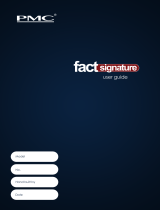 PMC Speakers fact.12 signature User manual
PMC Speakers fact.12 signature User manual
-
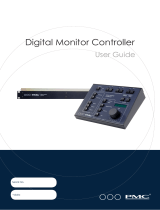 PMC Speakers Digital Monitor Controller User manual
PMC Speakers Digital Monitor Controller User manual
-
PMC twenty5.23 User manual
-
 PMC Speakers Fact.3 User manual
PMC Speakers Fact.3 User manual
-
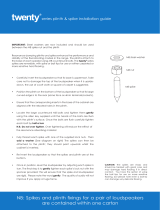 PMC Speakers twenty.23 Installation guide
PMC Speakers twenty.23 Installation guide
Other documents
-
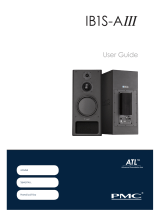 PMC IB1S-AIII User manual
PMC IB1S-AIII User manual
-
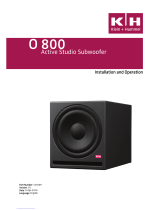 Klein + Hummel O 800 Operating instructions
Klein + Hummel O 800 Operating instructions
-
 Klein + Hummel 0 870 Operating instructions
Klein + Hummel 0 870 Operating instructions
-
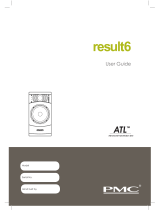 PMC result6 User manual
PMC result6 User manual
-
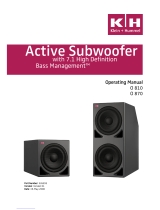 Klein + Hummel O 810 Operating instructions
Klein + Hummel O 810 Operating instructions
-
Senal PMC-II Passive Monitor Controller User guide
-
SE Munro Egg 150 Operating instructions
-
Sound Town CARME-28SPW1.1 User manual
-
Midas DL461 Owner's manual
-
Midas PRO X-CC-TP Owner's manual




















































